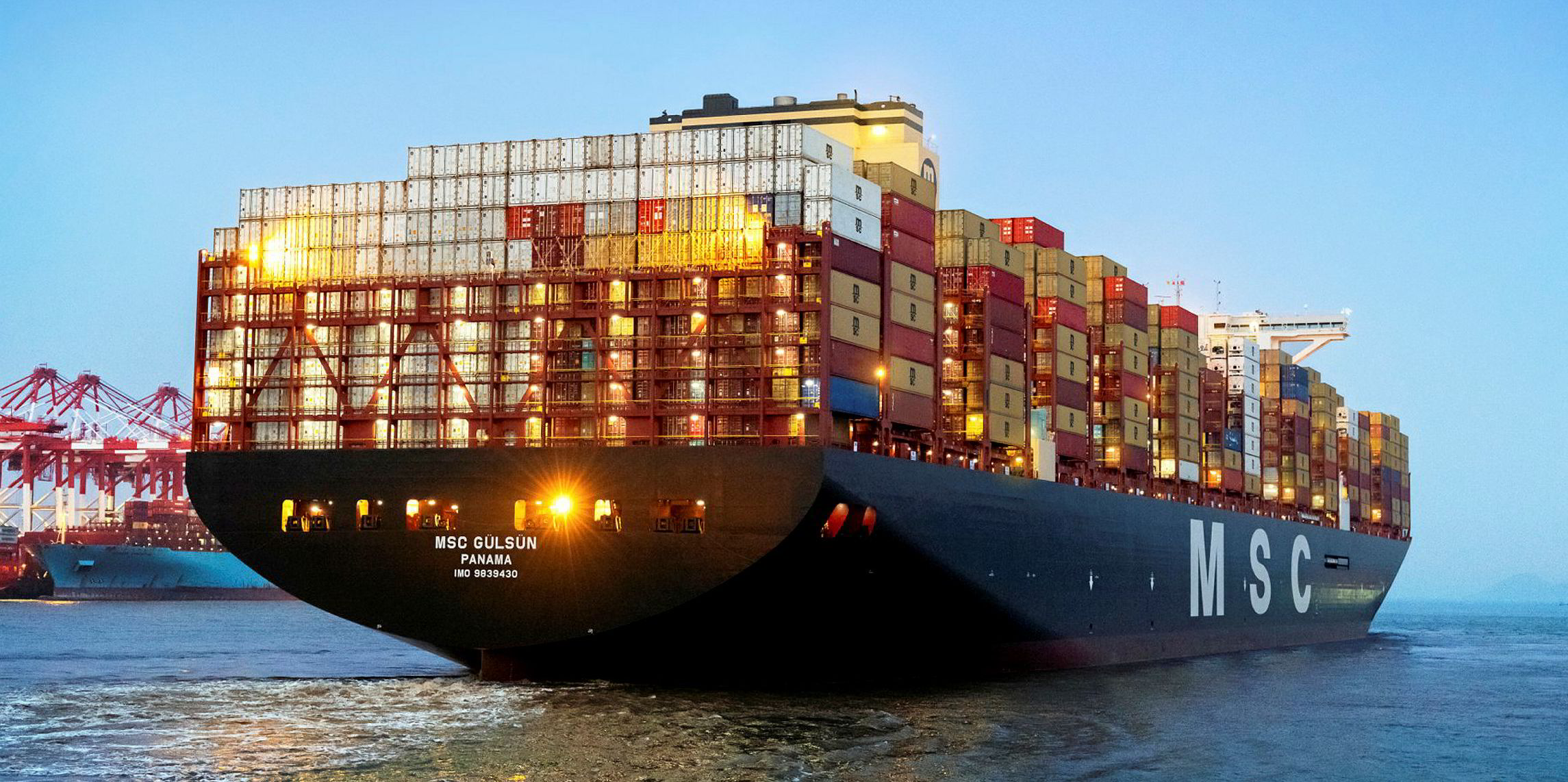The newest mega-boxship's arrival in Europe last week was accompanied by more than the usual ballyhoo about the latest in a long line of the world's biggest containerships.
While the press across the continent were full of stories about the colossal scale of the MSC Gulsun — with a theoretical maximum capacity of 23,756 teu — it was the advertising from owner Mediterranean Shipping Co (MSC) that also caught the eye.
In the pages and websites of the business press in particular, MSC spent heavily to champion not the sheer scale of the vessel, although that is in itself impressive, but its environmental footprint. Or more accurately, what MSC claims is the ship’s low levels of emissions relative to older, rival vessels.
Rival move
Just days later, MSC’s peer CMA CGM came out with its own eye-catching announcement that it would not use the Northern Sea Route through the Arctic on environmental grounds.
The French company called the decision to avoid the route — which is opening up as climate change reduces the extent of ice — a "forward-looking, socially responsible choice to protect the biodiversity of both the Arctic region and the entire planet".
Taken together, the actions of these three liner giants — which collectively represent about 45% of global container carrying capacity — show their battle for business has moved onto new ground; the territory of environmental, social and governance issues
It was all part of a choreographed environmental charm offensive embraced by CMA CGM’s chief executive Rodolphe Saade in the run up to French President Emmanuel Macron’s hosting of the summit of G7 leaders in Biarritz.
A meeting with Macron in the Elysee Palace saw Saade deliver the Sustainable Actions for Innovative and Low-impact Shipping (SAILS) Charter on behalf of 10 shipowning signatories.
Meanwhile, it should not be forgotten that AP Moller-Maersk is taking an aggressive stance on improving the environmental impact of its operations.
Last year, chief executive Soren Skou made an ambitious commitment to have net-zero carbon emissions by 2050, a pledge far bolder than the IMO's target of a 50% reduction in carbon emissions by 2050 when compared with those made in 2007.
The carbon pledge is part of the Danish line’s wide range of initiatives it claims will help make its business more sustainable in years ahead, including green ship scrapping and responsible procurement.
Taken together, the actions of these three liner giants — which collectively represent about 45% of global container carrying capacity — show their battle for business has moved onto new ground; the territory of environmental, social and governance issues.
And where the liner industry goes today, there are clear signals that the rest of the shipping business will need to follow close behind.
Potent differentiation
For over 50 years, liner shipping companies have been battling to find a potent way to differentiate themselves from their rivals.
Containers by their very nature commoditised the business, forcing lines to compete almost solely on price, while abolition of antitrust exemptions saw lines lose their access to closed and monopolised markets.
Attempts by liner operators to differentiate services by offering fixed-day-of-the-week sailings, inland haulage options and box tracking all failed to bring a price premium.
It appears the latest throw of the dice is the environment, and sustainable business practices in general.
The pitch to shippers is to choose a “green” shipping option ahead of a dirty rival, to play on the opinions of their retail customers. Whether they would be willing to pay a premium remains unlikely.
The lines are spending heavily to back up their marketing pitch with ships that meet such needs. MSC, which ranks as the world’s second-largest line with 3.61m teu capacity (equal to 15.5% of the total, according to data from Alphaliner) claims the MSC Gulsun is one of the most energy-efficient vessels afloat, which will help it further cut CO2 emissions per tonne of cargo moved.
Aggressive investment
CMA CGM is taking a more aggressive investment position by building a fleet of 20 LNG-fuelled vessels, including nine 23,000-teu boxships.
It currently operates 2.71m teu (11.6%), putting it in fourth place in the global rankings. But, with an orderbook of 27 ships totalling 403,562 teu, it is set to move back into third place and overtake China’s Cosco Group, which currently has 2.93m teu (12.5%) but a smaller orderbook.
Market leader Maersk Line remains the biggest operator by some distance with 4.18m teu (17.9% share of the total) but has only 28,640 teu on order.
Attention on environmental performance is spreading rapidly to the dry bulk market. Earlier this summer, BHP said it would set public goals next year on reducing greenhouse gas emissions from its products.
It is thought to be the first such commitment from a major mining company, which will have implications for its entire value chain including the shipping arm.
Liner companies may today be courting shippers who are sensitive to their customers’ values. But tomorrow, the same pressures are likely to be found embedded in all shipping markets.




